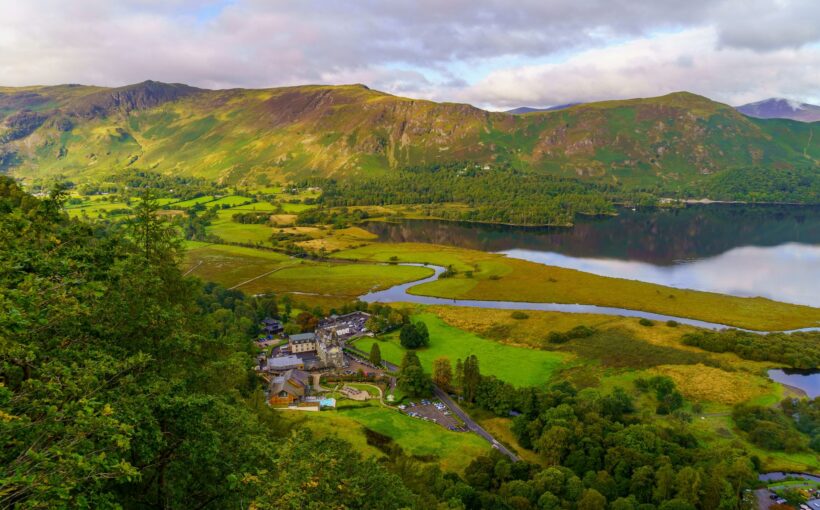A month’s worth of rain has poured down in just a few hours in parts of central and southern England. More than 300 flood-related emergency calls were made, major roads were submerged, trains were delayed, and an enormous sinkhole opened up on a football pitch in south London.
This follows similar torrential rain across central and eastern Europe two weeks ago, which led to flash floods and widespread damage and deaths. As climate change alters rain patterns and makes extreme downpours more common, and more extreme, such flooding is increasingly the new normal.
Intense rain doesn’t lead to serious floods every time, of course. Sometimes we get lucky: a well-timed low tide might help, or a rainstorm could be surprisingly localised in a place where water can easily flow into the sea, a river or a pond. And some of the actions taken by humans to minimise the risk of catastrophic floods can actually make life more pleasant anyway, even when it isn’t raining. For this reason, we should see rains like this not just as a challenge, but as an opportunity.
Minimising the risk of disaster
There are various things we can do to minimise flood risks before and after torrential rains and prevent smaller floods from escalating into disasters.
We can build bigger and better drainage and stormwater infrastructure, for instance, and make sure drains are unblocked and flood walls are properly maintained. This is an example of so-called “hard” flood defences.
Features like ponds and wetlands, larger parks, or trees on hillsides, help slow down or store rainwater and can ensure the flow is spread out over days or even weeks. Water flows much faster over bare ground, and especially over concrete roads and buildings, where urban drainage systems can soon be overwhelmed – causing floods. These features are known variously as “nature-based solutions” or “sustainable drainage systems” or “blue-green infrastructure”.
We can also use smart technologies for flood warning systems and we can ensure people are aware and prepared. We can ensure people don’t live in flood-prone areas in the first place, through climate-resilient planning, and that those who do live there are insured and have flood-proofed their homes as best they can.
More sustainable flood management
In the UK, several exemplary projects address flood management. The most iconic is the Thames Barrier in London, which protects the city from storm surges and high tides coming from the North Sea. Another is the the Leeds Flood Alleviation Scheme, which protects over 3,000 properties and 500 businesses in the UK’s fourth-largest urban area. It involves a combination of hard defences – weirs, flood walls – and natural solutions like planting trees and constructing water storage areas.
The National Storm Overflows Plan for England report is being reviewed by the UK government for approval by December 2024. One of its recommendations is to make sustainable drainage systems mandatory.
A government scheme (Flood Re) also ensures homeowners in flood-risk areas can protect their homes and obtain affordable insurance. And various rivers have been allowed to “wiggle” once again, by flooding over nearby fields. This has proven effective at reducing peak flows during storms, which is especially beneficial downstream where people live and where rivers are often encased in human-made banks.

These initiatives are part of a broader trend toward more sustainable flood management practices. Key projects such as the “slowing the flow” project in Pickering, Yorkshire or projects along the River Derwent in Cumbria focus on reconnecting rivers with their floodplains.
Worldwide lessons
The Netherlands is one of the world leaders in flood management. The Delta Works, a massive system of dams, sluices, locks, dikes and storm-surge barriers, protects the country, much of which is below sea level, from flooding due to rainfall and rising sea levels.
The Room for the River programme, started in 2007, manages higher water levels in rivers by lowering flood plains, creating water buffers, relocating levees, increasing the depth of side channels, and constructing flood bypasses. Urban adaptations, such as those in Rotterdam, are also crucial for managing flash flooding.
Japan, particularly in flood-prone areas like Tokyo, has built massive underground flood tunnels to divert rainwater during storms. This system helps protect the city from excessive rainfall and typhoons. In many European countries, sustainable drainage systems are now integrated into urban planning. This helps absorb excess rainwater during storms, while offering ecological and social benefits too (grass and ponds are ultimately a lot nicer than bare concrete).
It’s crucial to be aware of the problem of intense rain and view it as a chance to improve society. Prolonged droughts highlight the need to focus on storing and using excess water during high-demand times, which can be done by creating wetlands, storing floodwaters or by enabling the soil to store and retain more moisture.
Engineers can’t do all this by themselves. Neither can tree-planters or wetland creators. We need a hybrid approach combining engineering solutions with nature and community efforts.
![]()
Maryam Imani is a member of the Institution of Civil Engineers and a STEM programme ambassador.



